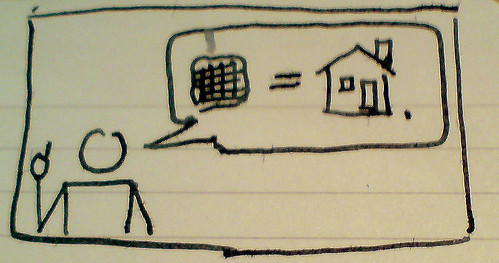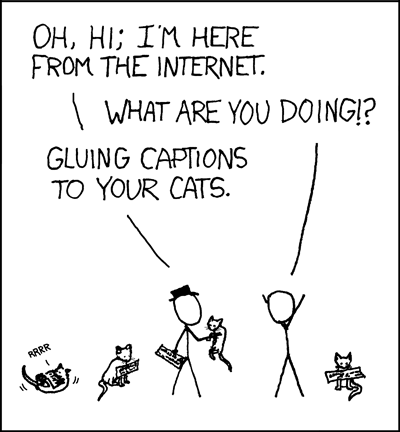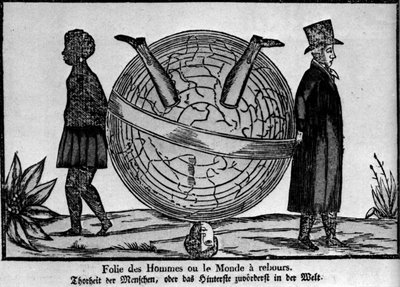Faber chief executive Stephen Page’s article in yesterday’s Guardian outlines some straightforward ways of taking advantage of social media, on-demand business models and so on in the interests of sustaining Faber into the 21st century. Push out content that brings people back to your core product; build communities; leverage print on demand. All fairly basic stuff.
But the comments are intriguing. Granted, Comment Is Free for some reason attracts exceptionally bellicose commenters; but even so the juxtaposition of Faber, a bastion of traditional highbrow literature, with its associations of TS Eliot and the ‘aristocracy of culture’, with the digital space, has prompted howls of derision entirely out of proportion to the relatively moderate statements in Page’s piece.
The idea of using the Web – which, notwithstanding its roots in the military, has a strong bottom-up ideology – to further good old-fashioned ‘high culture’ is horrifying to one commenter: “Why must *YOU* be the one to create that additional content, when heretofore that content has been (relatively) independently produced? Because you need to control opinion and dictate what the reading public is told about?”. To another, Page’s attempts to harness the Web for old-fashioned publishing is doomed, because the internet’s culture of sharing – via Project Gutenberg and elsewhere – will eventually mean that all books are free.
It seems as though the great commenting public wants it all ways. Faber is an intellectually-snobbish establishment and must give way before the bottom-up populism of digital content. Publishing should keep its grubby corporate hands off the purity of the internet’s gift economy. Serious books are found only in independent booksellers. ‘Serious writers’ use the Web nowadays. The print book is doomed anyway. The print book will always exist. And so on.
What strikes me is that all these points are being muddled and thrown at the same article – often with little discernible reference to the thrust of the piece – because ‘quality writing’ is a cultural space where different kinds of internet use overlap. The Web is both a means of publishing content, and also a means of promoting content published in other media. But in the discourse of books and the internet the two are often talked about in the same breath, connected – or separated – by debates about quality, democracy and so on.
Page laments about the rise of the mass market, and the burying of ‘serious’ writing ‘under a pile of celebrity biography, cookery and misery memoir’. But the ideology of ‘the literary’ – gestured at in Page’s resolutely highbrow stance – is firmly connected to the tradition of print. Page does not envision a culture mediated solely through the Web, but rather a avision of ‘global communities’ finding niche interests and sourcing the books that nourish them, cheating the mass market of its final victory over ‘serious’ culture:
I am not an advocate of the life led online, but as broadband reaches all generations, genders and income brackets, so this will develop usefully. It won’t be all of life but it must be a place where niche interests can develop, robbing the mass market of a portion of its control. Literature can thrive in these places.
So publishers must harness the great power of online networks through enriching reader experience. We must provide content that can be searched and browsed, and create extra materials – interviews, podcasts and the like. We mustn’t be afraid of inviting readers to be involved. Beyond online retailing, publishers can now build powerful online places to showcase their books through their own and others’ websites and build communities around their own areas of particular interest and do so with writers.
‘Literature’ here evokes a well-rooted (if not always clearly-defined) ideology. When I say ‘literary’ I mean things fitting a loose cluster of – sometimes self-contradictory – ideas including, but not limited to:
the importance of traceable authorship
the value of ‘proper’ language
the idea that some kinds of writing are better than others
that some kinds of publishing are better than others
that there is a hierarchy of literary quality
And so on. If examined too closely, these ideas tend to complicate and undermine one another, always just beyond the grasp. But they endure. And they remain close to the core of why many people write. Write, as an intransitive verb (Barthes), because another component of the ideology of ‘literary’ is that it’s a broadcast-only model. If you don’t believe me, check out any writers’ community and see how much keener would-be Authors are to post their own work than to critique or review that of others. ‘Literary’ works talk to one another, across generations, but authors talk to readers and readers don’t – or at least have never been expected – to talk back. (Feel free, by the way, to roll your own version of this nexus, or to disagree with mine. One of the reasons it’s so pervasive as a set of ideas is because it’s so damn slippery.)
Recently, in our Arts Council research, Chris and I have interviewed writers, magazines, publishers and proponents of countless other types of literary activity. And it’s clear that the writerly world uses the Web in two distinct ways. Firstly, it is – as Page’s article describes – an effective way of promoting or streamlining literary activity that is not intrinsically digital. A good example might be the way in which online zines function as a front-line filter for new writing – as it were the widest-mesh filter for literary quality – and for many is often the first taste of publishing.
People use the Web to share work, peer-review their writing, promote activities, sell books and find others with the same interests. But this activity happens almost always with reference to the ideology of the literary – in particular, to the aspirational associations of broadcast-only, hard-copy-printed, selected-and-paid-for-and-edited-by-someone-else-and-hopefully-bought-and-read-by-the-public publication. For those submitting to such magazines, the hope is that they will move up the literary food chain, get published in better known journals, and perhaps – the holy grail – finally after decades of grim and impecunious slogging, be anthologized by Faber.
But while the majority of ‘literary’ activity online is of this sort, defined always implicitly in relation to the painful journey towards selection for the ultimate validation of print publication, the vast majority of writing online is not. For starters, most of it doesn’t self-identify as ‘creative’: it’s informational, discursive, conversational and ephemeral. Then the Web encourages collaborative writing, interrogating the idea of individual voice. Fan fiction, with its lack of interest in ‘originality’, peer-to-peer social structures and cheerfully hedonic attitude interrogates the idea of ‘originality’. Collaborative writing technologies interrogate the idea of authorship; 1337 interrogates ‘proper’ writing. I have yet to find a collaborative writing platform (try Protagonize, 1000000monkeys or ficlets if you like) that’s produced a story I want to reread for its own sake. Ben has written recently on how ‘boring’ he finds hypertext. The skittish and innovation-hungry blogosphere, while increasingly a source of books is not in terms of the output most natural to it ‘literary’ in any sense that bears any relation to tradition of such. And when stories are told in a form that makes best use of the internet’s boundless, unreliable, multi-platform qualities – think of an alternate reality game – this bears little resemblance to anything that could be assessed in such terms either.
I’m aware that all this could easily be read either as a dismissal of the cultural value of the Web, or else as a call to the world of literature to get back in its box. But I mean neither of those things. What I do want to suggest, though, is that it’s not enough to murmur soothingly about how Web is a young form, and that it’ll take a while for ‘great writers’ to emerge. Rather, it strikes me that the ideology of ‘the literary’ – including that of ‘great writers’ – is profoundly bound to the physical form of books, and to pretend otherwise is to misunderstand the Web.
Obviously plenty of print books have no literary value. But the ideology of ‘literary’ is inseparable from print. Authorship is necessary and value-laden at least partly because with no authorship there’s no copyright, and no-one gets paid. The novel packs a massive cultural punch – but arguably 60,000 words just happens to make a book that is long enough to sell for a decent price but short enough to turn out reasonably cheaply. Challenge authorship, remove formal constraints – or create new ones: as O’Reilly’s guides to creating appealing web content will tell you, your online readership is more likely to lose interest if asked to scroll below the fold. Will the forms stay the same? My money says they won’t. And hence much of what’s reified as ‘literary’, online, ceases to carry much weight.
So net-savvy proponents of ‘literary’ stuff aren’t trying to use the Web as a delivery mechanism. Why would you, when there are so many other things it’s useful for? Tom Chivers, live poetry promoter and organizer of the London Word Festival, estimates that he spends a third to half of his time as a promoter on online community-building activities. But the ‘literary’ stuff that he’s organizing happens elsewhere; his online activity is vital to promoting his work, but is not the work itself. Similarly, I spent a fascinating hour or so this afternoon talking to Joe Dunthorne, who told me that he was spurred to complete his novel Submarine by the enthusiastic popular response that first drafts of the initial material generated on writers’ community ABCTales – an intriguingly twenty-first century way to find the validation you need to push your writing career forward. Tom and Joe are both in their twenties, passionate about writing and confidently net-native. Both use the Web in a way that supports their literary interests. But neither sees the Web as a suitable format for ‘final’ publication.
This isn’t to suggest that there’s no room for ‘the literary’ online. Finding new writers; building a community to peer-review drafts; promoting work; pushing out content to draw people back to a publisher’s site to buy books. All these make sense, and present huge opportunities for savvy players. But – and here I realise that this all may be just a (rather lengthy) footnote to Ben’s recent piece on Hypertextopia – to attempt to transplant the ideology of the literary onto the Web will fail unless it is done with reference to the print culture that produced it. Otherwise the work will, by literary standards, be judged second-rate, while by geek standards it’ll seem top-down, limited and static. Or just boring.
I’ll be interested to see how Faber approaches online community-building. Done well, here’s no reason why it shouldn’t help shift books. But while it might help shift books, or be used to reproduce or share books, the Web is fundamentally other to the philosophy that produces books. Anyone serious about using the Web on its own terms as a delivery mechanism for artistic material needs to abandon print-determined criteria for evaluating quality – literary values – and investigate what the medium is really good for.









 I’m at the
I’m at the 